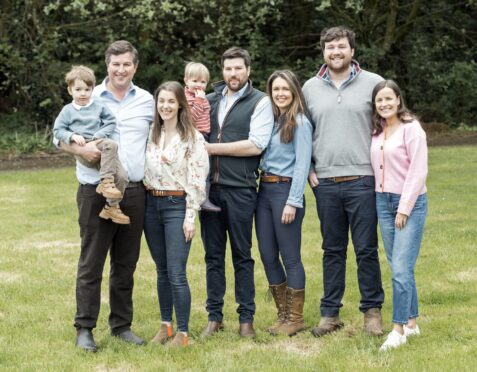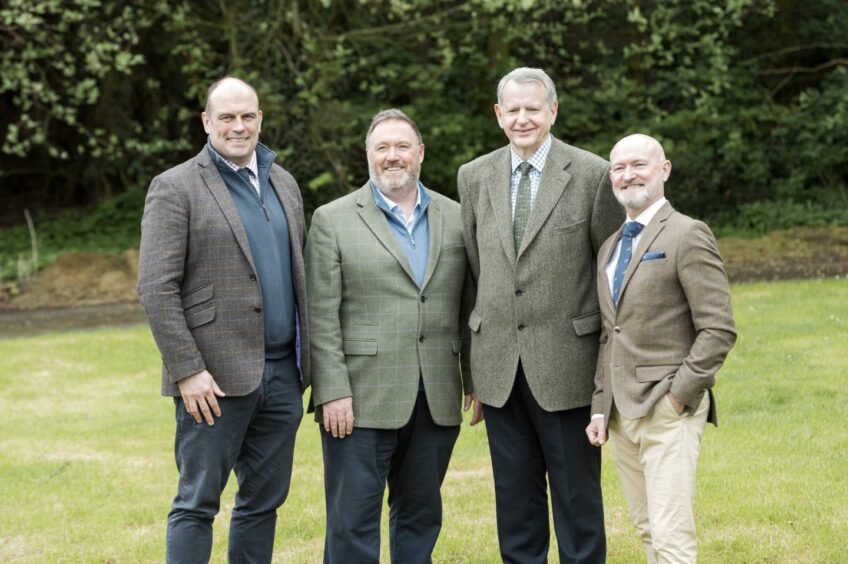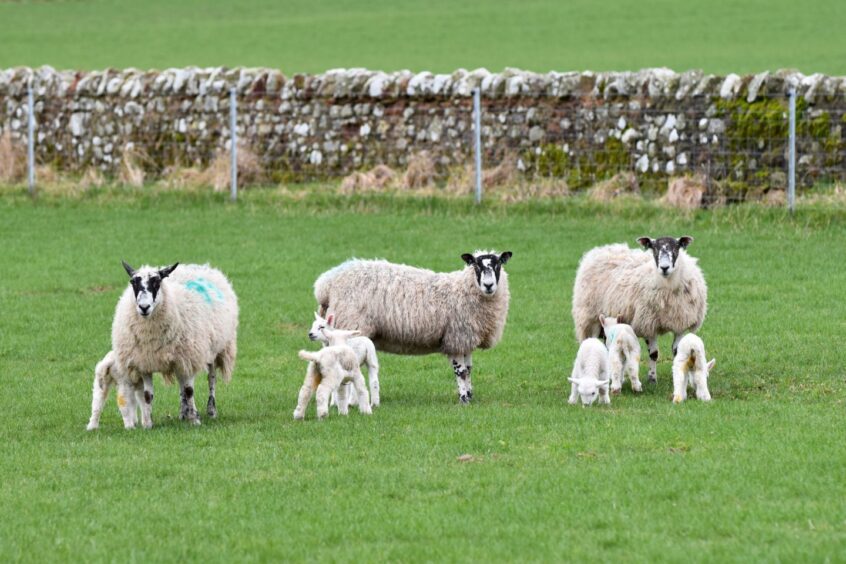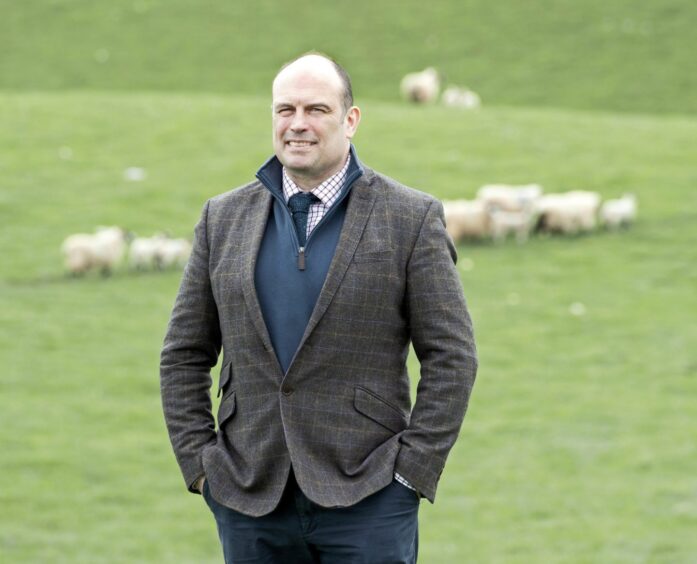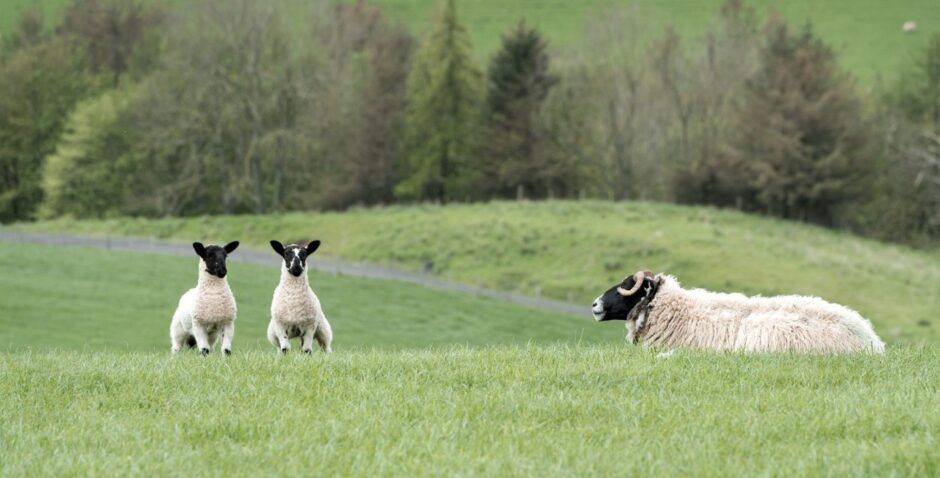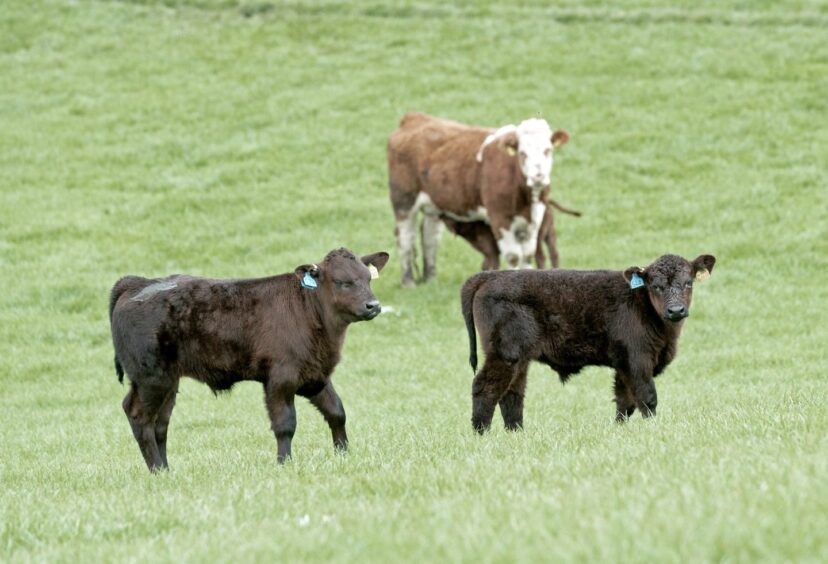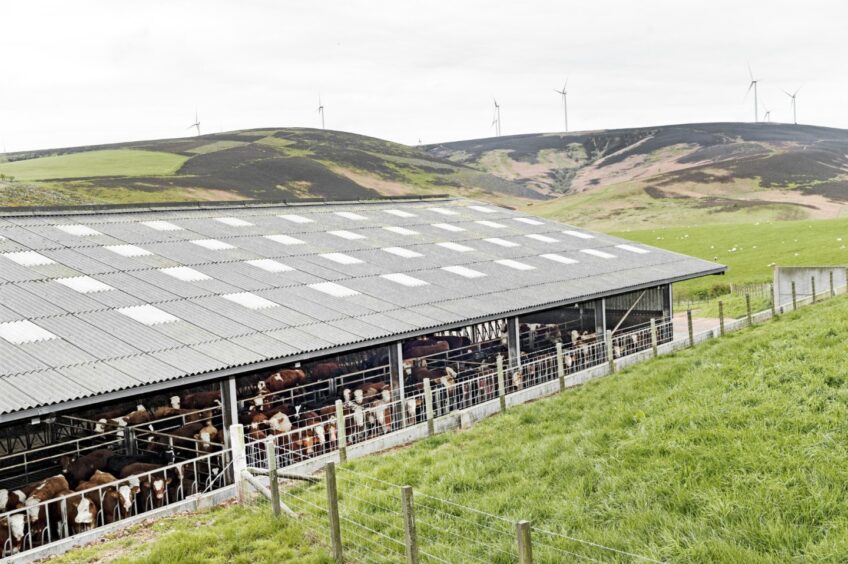The Hamilton family from East Lothian are preparing to open their farm gate to thousands of farmers for the biennial event NSA Scotsheep 2024.
After one of the toughest spring seasons on record for farmers across the UK, those working in the industry are certainly in need of a day out to network with old and new friends.
Featuring a record breaking number of trade stands and breed societies, along with several seminars and demonstrations, and the much anticipated farm tour, the event on Wednesday June 5 is one not to be missed.
For the Hamilton brothers – James, Charles and Harry – along with their mother Vanessa, and respective wives Emma, Jane and Rebecca, final preparations are taking place at Aikengall.
The family farms a combined 6,000 acres across six units near Innerwick, Dunbar, which is either tenanted, contract farmed or owned.
Across the units, they run 2,800 breeding ewes and 900 spring calving cows with Simmental genetics featuring heavily in the females to cross with Simmental, Aberdeen-Angus and Lincoln Red bulls.
Three brothers farming 6,000 acres across six units
The 1,900-acre Aikengall, where eldest son James is based with his family, is home to 1,400 Blackface ewes and the large suckler herd.
Of the Blackie flock, 700 are bred pure and the remainder are crossed to the Bluefaced Leicester to produce replacement Scotch Mules for the tenanted Nunraw, managed by youngest son Harry.
The flock of 1,400 Mules at Nunraw are in a high input, high output system with the aim of selling 1,200 Texel-sired lambs before the Royal Highland Show in late June, with the remainder weaned in July and sold thereafter.
Just next door lies Stenton Newmains where they have recently taken on contract farming 156 red dear hinds and 40 Luing cows over 350 acres, and with the two farms sharing a march fence it couldn’t be more ideal.
From the hill at Nunraw, looking to the coast you can see the 600-acre arable unit, Barney Mains, which is run by Charles, who grows spring barley and a variety of vegetables and fodder.
2,800 breeding ewes and 900 spring calving suckler cows
“The move east from Lanarkshire has certainly helped with the ability to expand the business and create opportunity for all three of us to have a go at farming,” said James.
“Our late father John was extremely driven in terms of succession with the aim to build a business that could be split into three viable farming businesses, and to leave us better off that when he began his farming career.”
It’s a system that works well for the team as with outside help only brought in during the tight four-week lambing period, the regular work is shared between the brothers.
‘Our late father John was extremely driven’
Fattening hoggs and youngstock are grazed on the arable ground while all ewe hoggs and bulling heifers go to the contract farmed block of 2000 acres at Coreshope for the summer.
The system starts with the Blackface ewe at Aikengall and a few bought-in shearlings are used on what James calls the nucleus flock, from which ram lambs are used on the pure-bred flock before selling on as shearlings the following year.
A small flock of a dozen or so Bluefaced Leicesters are kept to breed tups for the crossing job which has enabled the team to keep the entire flock as closed as possible with only stock rams purchased.
“We do sell some Blackie tups each year but we’re breeding predominantly for commercial attributes so carcase is the main factor,” he said.
“We’re quite lucky in the respect that we can move a pure-bred Blackie to the cross-bred flock if she’s not right, but we’ve found that we really need the Blackie and Mule flocks to be the same size to maintain both with home-bred replacements.”
The resulting Mule moves to Nunraw where she is bred to Texel rams to produce a uniform crop of lambs that can be finished in a relatively short space of time off grass with minimal creep feeding.
Harry explained: “We’ve tried a few different breeds here but the Texel clicks well with our ewes and our system as by avoiding the fashionable sorts with strong heads and opting for big, bare rams with a good carcase we’ve got the advantages of easy lambing and lambs that grow on well with a large proportion of them finished in 10-12 weeks.”
Ewes run with teasers ahead of tupping then breeding rams are given just four weeks to keep a tight lambing period, resulting in a more uniform crop of lambs but, just as importantly, frees sheds for calving from April onwards.
Texel used as terminal sire over Scotch Mules
Hoggs were bolused this year which the brothers think has made a real difference and Mules are kept quite tight at tupping to reduce the number of triplets.
Scanning percentages have varied around 210% in the past but this year’s 195% was more manageable for the family, with fewer triplets.
Less than 2% of the flock scanned empty.
The health of the flock is extremely important and ewes have been metabolic tested ahead of lambing over the last few years.
Blood samples are taken from a couple of ewes in each group and good levels of energy and protein have meant they could hold off on offering supplementary feeding for a few weeks, or if levels were low would have meant feeding slightly earlier than planned.
Ovine Pulmonary Adenocarcinoma (OPA) was causing a loss of up to 7% in the flock each year so the entire flock is now tested twice a year by transthoracic ultrasound which detects tumours in the lungs.
While it is a labour-intensive couple of days, the culling of infected animals has brought OPA instances down to less than 1%.
Health regime top of agenda in sheep flock
“We are ruthless in getting problems right and have a tough culling policy so anything with problem feet, bad back or prolapses are gone – there are no second chances here,” pointed out James.
“We firmly believe these issues are genetic so by getting rid of them as we go has made the job easier further down the line and I can proudly say I haven’t turned a ewe over to sort her feet for about 10 years.”
The cattle herd is culled hard on feet, bag or temperament problems and cows are run in a short six-week bulling period with even batches of calves finished on site.
On the infrastructure front, the recently erected 300 foot x 80 foot slatted shed at Aikengall has enabled the team to winter 600 cattle inside and bullocks are kept in during the summer too for a more efficient weight gain.
James pointed out: “To us, the cost of putting up sheds can be equated to buying more land as it’s allowed us to increase our stock numbers but we also lamb everything inside now, including the Blackies which we did for the first time when the Beast from the East hit and the losses during that time would have been unimaginable.
“Plus, we get the advantage of slurry and the difference it’s made to our grazing ground and reducing fertiliser costs is clear to see.”
Well-equipped steading allows for calving and lambing indoors
Soil is constantly tested for nutrients and pH, and grass freshened up every 10 years or so in a rotation with 15% red clover mixed in to grass mixtures.
The family has worked hard over the years to make a relatively low input system with good infrastructure and this year’s big event will very much be in recognition of their late father John, who passed away suddenly in 2019.
The brothers have two phrases they live by – ‘never let your farm know you’re poor by constantly investing in it’, and ‘live as though you’re going to die tomorrow, farm and breed stock as if you’ll live forever’.
